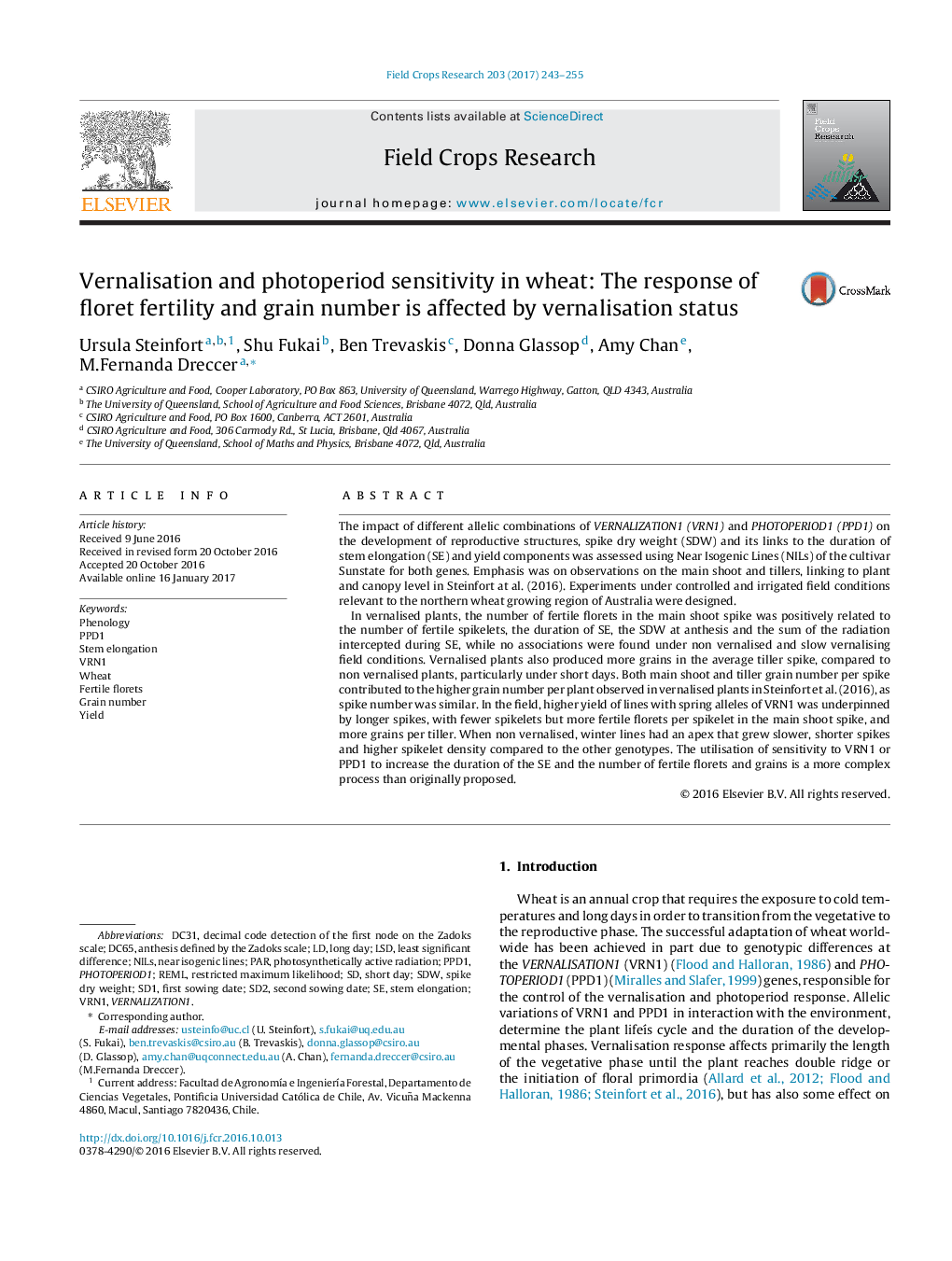| کد مقاله | کد نشریه | سال انتشار | مقاله انگلیسی | نسخه تمام متن |
|---|---|---|---|---|
| 5761482 | 1624660 | 2017 | 13 صفحه PDF | دانلود رایگان |
- Reproductive development of wheat near isogenic lines combining VRN1 and PPD-D1 studied.
- More fertile florets with longer stem elongation and higher anthesis spike biomass if plants vernalised.
- Vernalised plants had more grains in main shoot and tiller spikes than non-vernalised plants.
- Non vernalised winter lines had slow growing apex, shorter spikes, high spikelet density and less grains per spike.
- Regulation of grain set and synchrony as influenced by VRN1 and PPD-D1 deserve further study.
The impact of different allelic combinations of VERNALIZATION1 (VRN1) and PHOTOPERIOD1 (PPD1) on the development of reproductive structures, spike dry weight (SDW) and its links to the duration of stem elongation (SE) and yield components was assessed using Near Isogenic Lines (NILs) of the cultivar Sunstate for both genes. Emphasis was on observations on the main shoot and tillers, linking to plant and canopy level in Steinfort at al. (2016). Experiments under controlled and irrigated field conditions relevant to the northern wheat growing region of Australia were designed.In vernalised plants, the number of fertile florets in the main shoot spike was positively related to the number of fertile spikelets, the duration of SE, the SDW at anthesis and the sum of the radiation intercepted during SE, while no associations were found under non vernalised and slow vernalising field conditions. Vernalised plants also produced more grains in the average tiller spike, compared to non vernalised plants, particularly under short days. Both main shoot and tiller grain number per spike contributed to the higher grain number per plant observed in vernalised plants in Steinfort et al. (2016), as spike number was similar. In the field, higher yield of lines with spring alleles of VRN1 was underpinned by longer spikes, with fewer spikelets but more fertile florets per spikelet in the main shoot spike, and more grains per tiller. When non vernalised, winter lines had an apex that grew slower, shorter spikes and higher spikelet density compared to the other genotypes. The utilisation of sensitivity to VRN1 or PPD1 to increase the duration of the SE and the number of fertile florets and grains is a more complex process than originally proposed.
Journal: Field Crops Research - Volume 203, 1 March 2017, Pages 243-255
